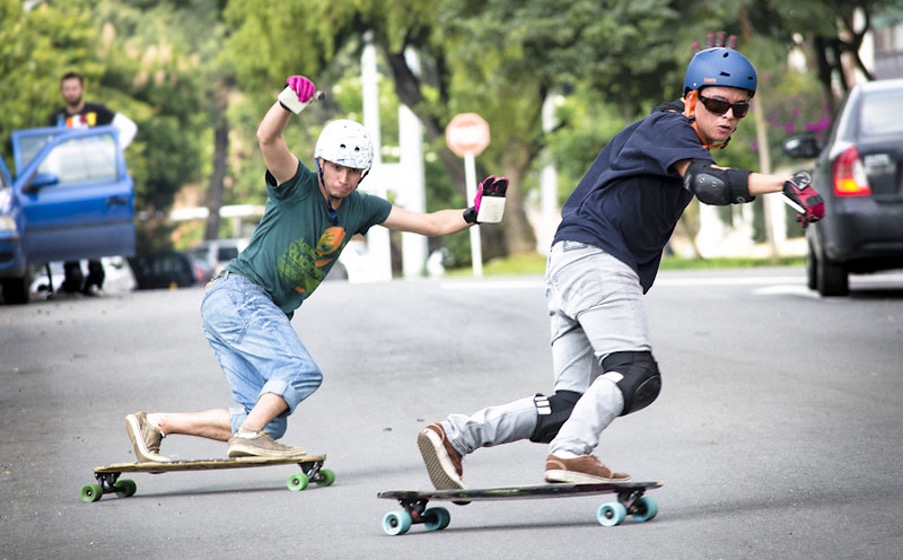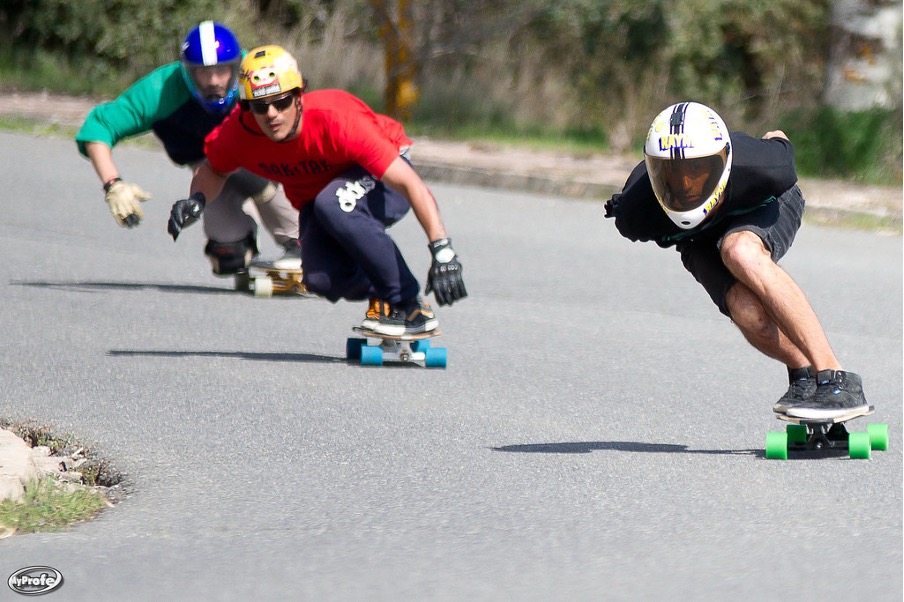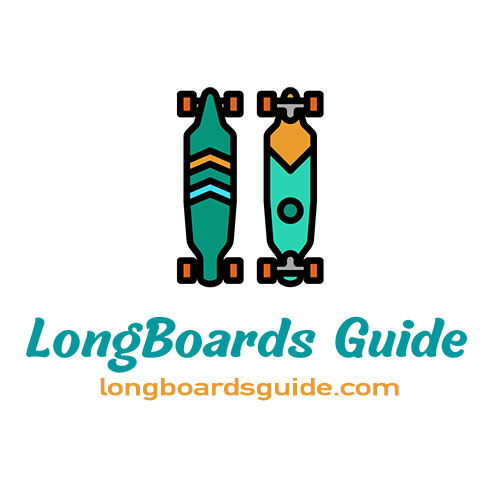Are you a beginner at longboarding? It would be best if you learned the basics of this sport before you can officially ride on the road without any worries.
Your stance is one of the most critical aspects of learning to longboard. In its simplest terms, it’s the way you position yourself on the board.
Stance refers to how you put your feet on the board and your body’s posture while surfing.
If you want to learn more about the longboard stance, it’s time to dig into this article to get more detail. Let’s scroll down!
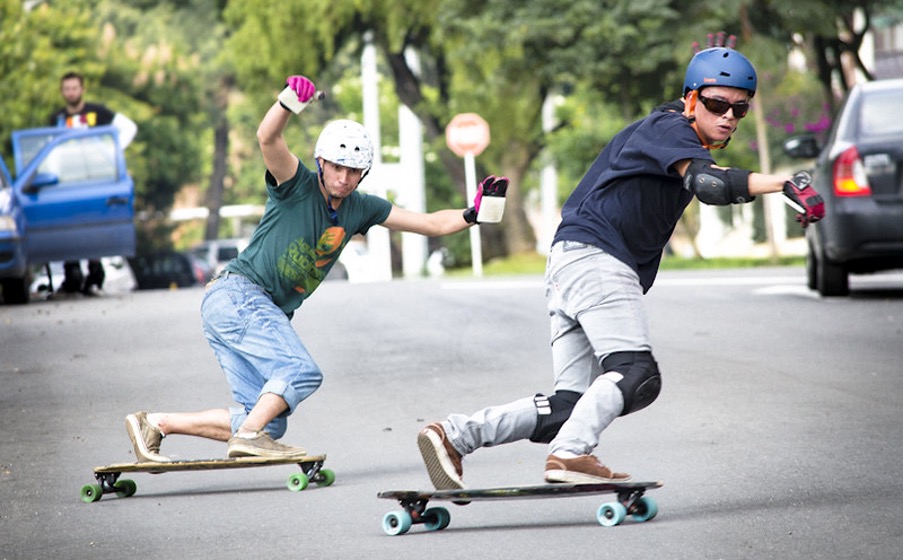
What Is A Longboard Stance?
Wait no longer! Let’s jump into the overview of the longboard stance.
History
Longboards were rediscovered in the 1990s when new materials became available.
Precision equipment and new designs allowed for the creation of quicker and more sturdy longboards throughout this period.
All of these improvements have resulted in a man called Pete Connolly being the fastest longboard rider globally, with a maximum speed of 146 km/h.
Overview
Longboard stance refers to understanding how you stand and balance on your longboard.
It is the most fundamental aspect of mastering any board sport. How do you achieve the correct posture?
The term “longboard stance” encompasses more than just how you stand when riding.
While longboarding, it’s also important to consider how you place your body weight and upper body parts.
The style of ride you’re about to do will also affect your posture. For instance, carving posture differs from downhill riding position.
Many people assume that being left-handed or right-handed affects posture. That’s not always the case.
Even if they are left-handed, many individuals find it more straightforward to handle heavy items with their right hand.
How can you determine which is your dominant foot? Your body and brain will dictate which longboard posture you’re most suitable and comfortable with.
Rather than concentrating on whether your foot is dominant, pay attention to how your riding feels.
No one can force the longboard posture. It must be natural. It should be what your brain directs while your limbs react instinctively.
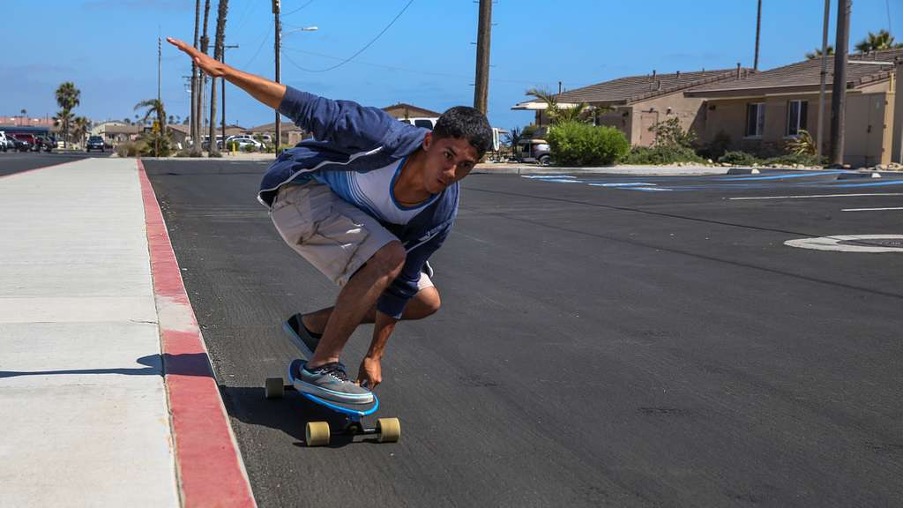
Types Of Longboard Stance
To master this sport, you should learn and try all types of stances to figure out your best-suited style. Below are the common posture types you should know.
Foot Braking
Foot braking posture entails standing on the front leg with the foot pointing towards the nose. The upper body should be forward-facing.
You gently stoop down to bring your rear foot equal to or a little forward of the standing foot to the pavement, Don’t kick the ground to push yourself up.
Instead, the back and mid-foot graze against the pavement, gently elevating the toes to avoid catching a bump or road crack.
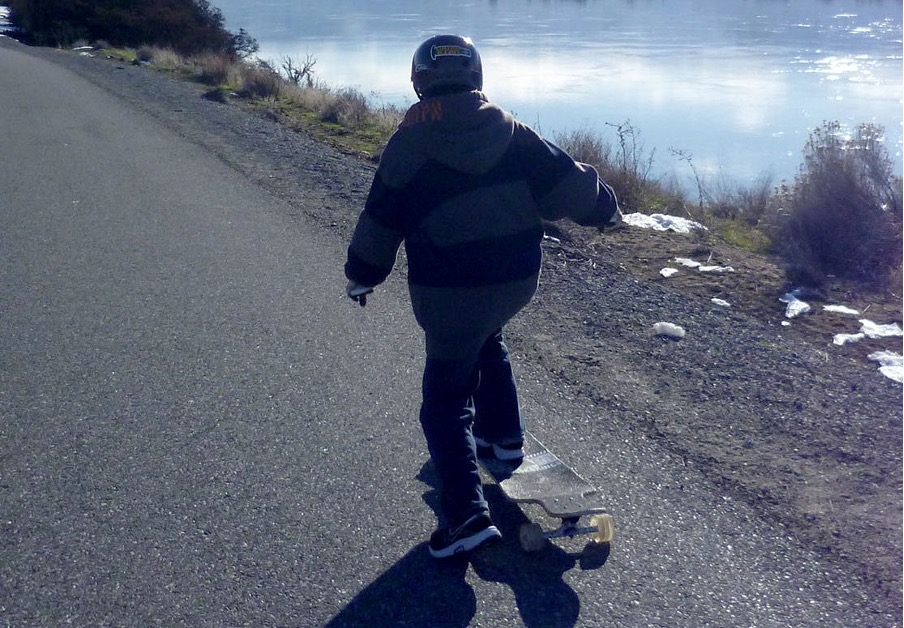
Pushing
The foot with the most force should conduct the pressing to perform this position. The less dominant foot will conduct the turning and balance.
However, that’s not always the case. Some longboard riders will do the opposite.
The dominant foot performs the driving and balance, while the less dominant one conducts the pushing.
You can try both ways to find which is more comfortable and suitable for you when riding.
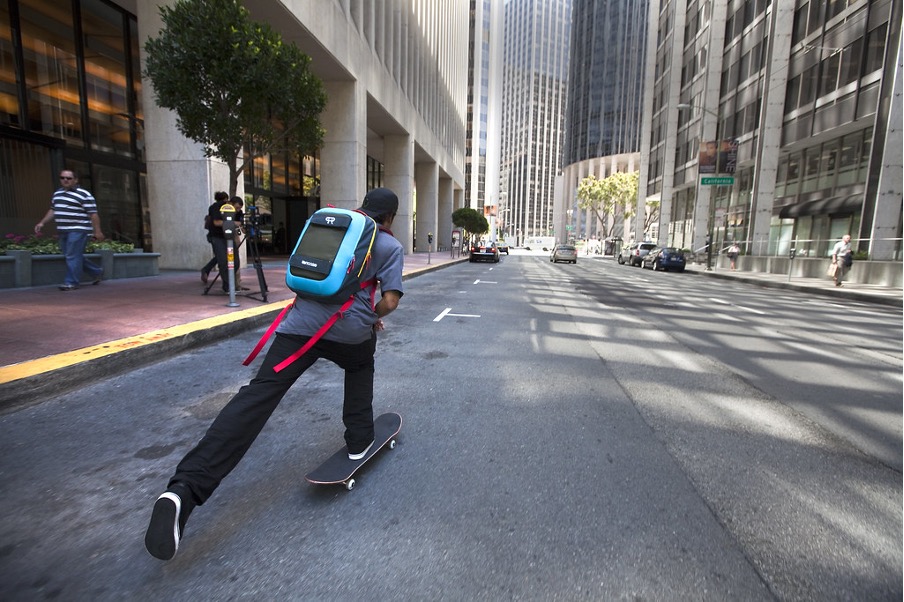
Cruising
Begin by moving at a steady pace with both feet broader than the shoulder-width apart.
Keep an eye out for the trucks in front and behind you to be the same distance apart.
To keep your balance, bend your knees slightly. Face forward with a slight rotation of your torso.
Avoid bending forward or backward with your torso. The position of your body must be neutral.
As soon as you discover a crack or a bump in the road, bend forward or flex your knees.
You can maintain balance when driving through the road obstruction by bending or leaning.
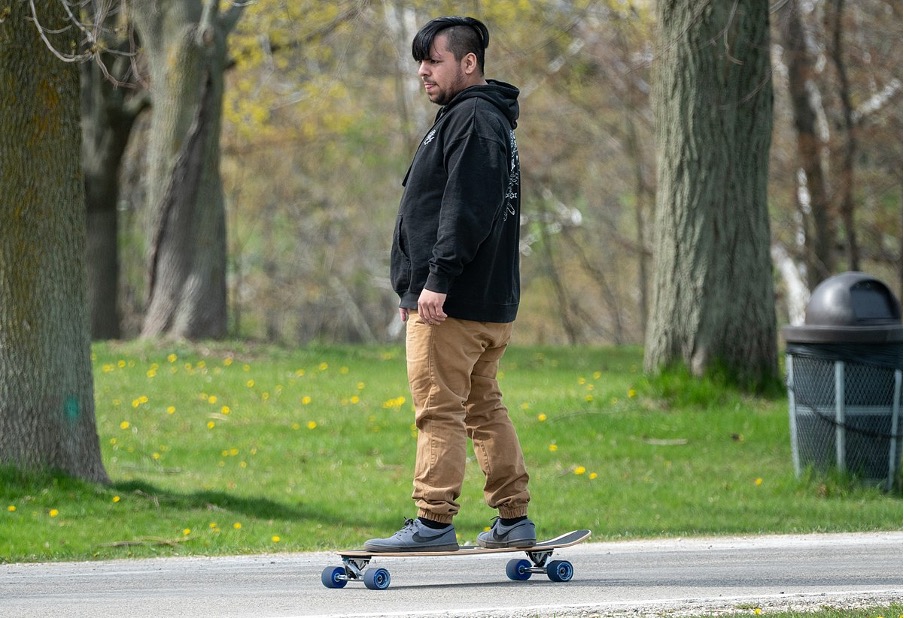
Carving
Carving is all about making sinuous curves to increase or lose speed. Beginners may find the carving posture difficult, but it is not impossible.
It is a specialized skating technique that relies heavily on establishing the proper position.
While performing this carving, you carve in S curves to balance out your growing speed or merely to lose the rate.
It takes a lot of continuous moving among your toes or heels to keep your body balanced on your board.
It would be best to keep your balance since the board may keep running on S lines, causing you to make constant turns.
Your feet should be perpendicular to the board on both sides.
As you slice and spin frequently, your knees should perform the task of flexing and straightening in various directions.
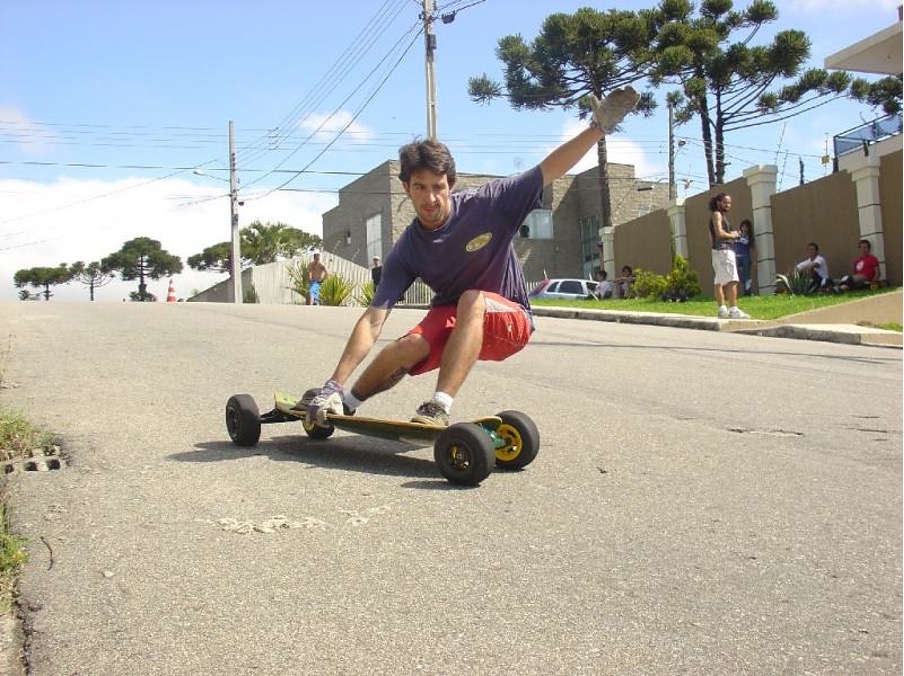
Speed
Speed style, also called tuck ride, entails assuming a body attitude that reduces wind resistance while maximizing speed stability.
The front foot will be tuck posture with the board deck at a slight inclination, near the front truck mounting.
The rear foot is roughly a foot’s length behind the front, lying over its toes. The shoulders are entirely forward, pointing towards the nose.
The front hip is extended, allowing the rear knee to tuck beneath the front knee. The torso is virtually vertically bent forward.
Tucking the arms behind the back is the last posture.
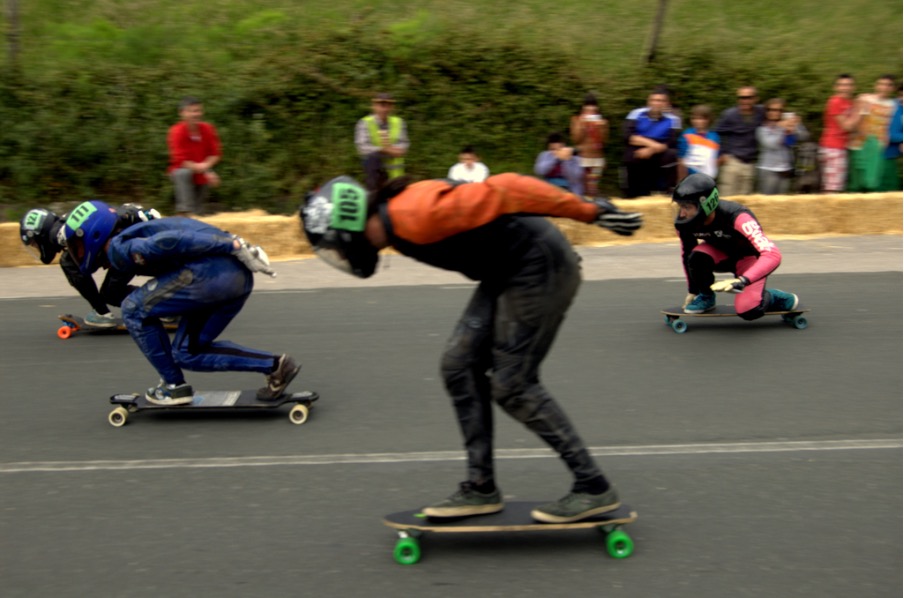
If you want to learn more about longboarding stance styles, you can watch this video:
Which Is Better For You: Goofy Or Regular Stance?
Goofy and regular stance are the most common styles in longboarding. Let’s find which technical skating style is suitable for learning to stand quickly.
- Goofy stance: When the right foot is the front foot on your longboard, and your left one is the back foot, you are in a goofy posture.
- Regular stance: You are in a regular stance when the right foot is the back foot on your longboard, and your left one is the front foot.
To determine whether you are a goofy rider or a regular rider, you can follow some tips:
- Figure out your dominant foot to keep balance when riding.
- Determine which is your front foot.
- The space between your feet must be broader than the shoulder width.
- Learn how to balance by gently bending the knees while riding.
- Keep in mind that your shoulders and hips should face a similar direction.
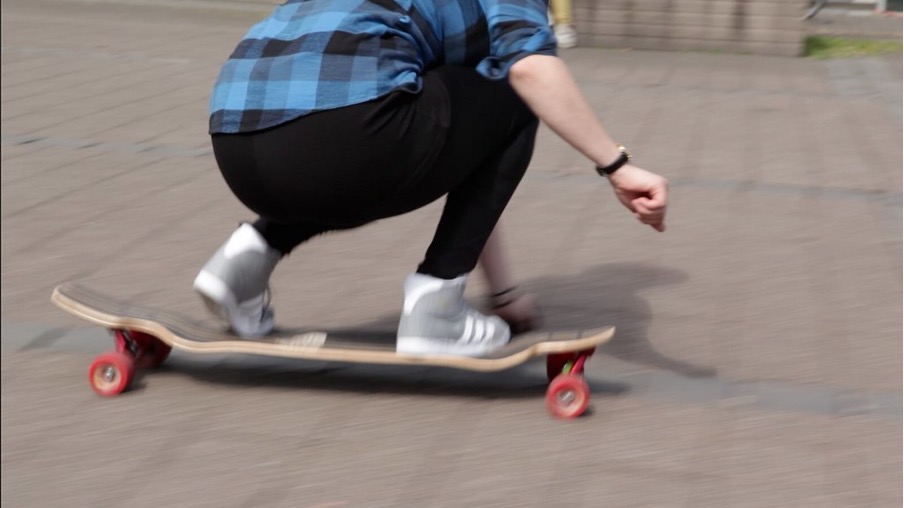
How Are You Supposed To Stand On A Longboard?
If it’s your first time riding a longboard, some tricks below may be helpful. Let’s keep reading!
Determine Which Foot Should You Use
Before you learn to ride a longboard, it’s best to identify which foot will be your dominant one when standing on the board.
You can consider between a goofy posture and the regular one following the tips mentioned above.
Try Cruising Stance On Your Longboard
Cruising is a good option if you want to move at a slow to medium speed while maintaining a calm physique.
Apply the technique for this posture described earlier.
Try Carving Stance On Your Longboard
After practicing cruising, you can move on to the carving technique. This posture is a little more complicated than the first one.
Scroll back up to see this skateboarding technique!
Try Tucking Stance For Speedy Adventures
When you are accustomed to simple riding techniques, you may want to try some challenging ones. If it’s what you want, let’s try tucking or speed posture.
Tucking entails placing the body in such a position that it decreases air resistance while providing maximum stability at high speeds.
We’ve also described this skating style in detail above, and you can pull back up to recheck it.
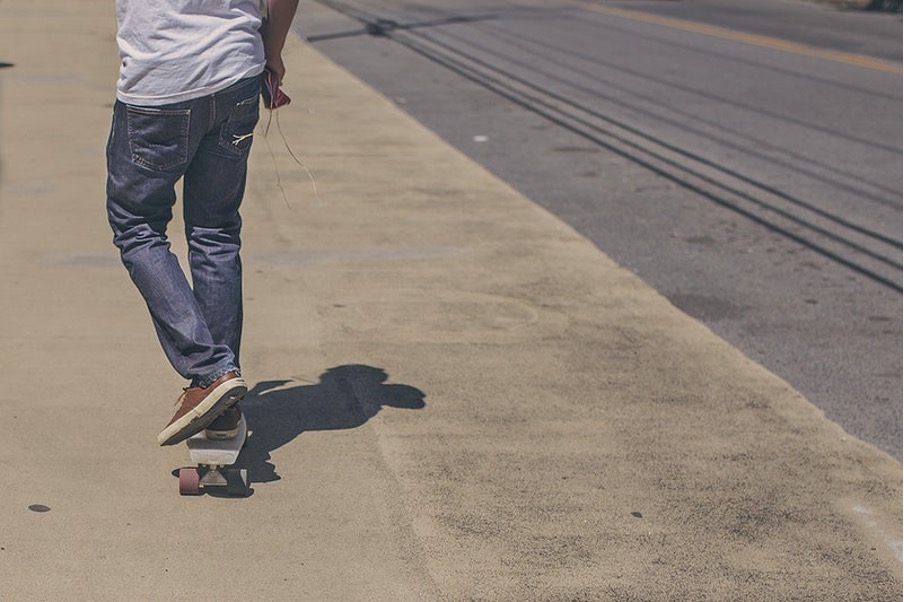
The Bottom Line
That’s all about longboard stance fundamentals you should know before you can master this sport.
There are various styles of stance you can perform while riding. It would be best to try all of them to figure out which is the most suitable for you.
Hopefully, this article will be helpful for you. If you have any further questions, feel free to comment below. Thanks for following us!




